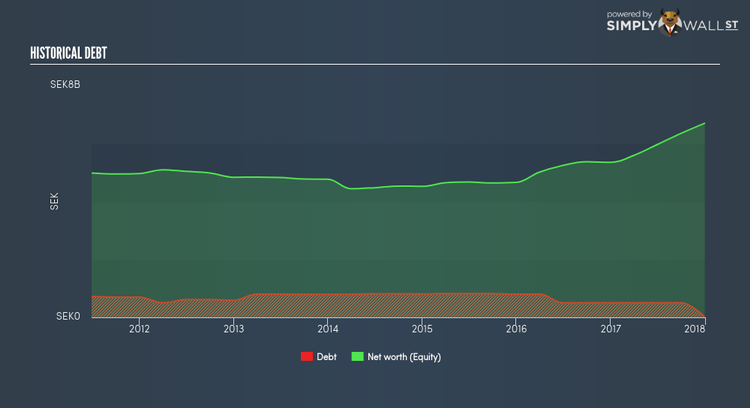Should You Expect Swedish Orphan Biovitrum AB (STO:SOBI) To Continue Delivering An ROE Of 17.15%?

Swedish Orphan Biovitrum AB (OM:SOBI) outperformed the Biotechnology industry on the basis of its ROE – producing a higher 17.15% relative to the peer average of 12.48% over the past 12 months. On the surface, this looks fantastic since we know that SOBI has made large profits from little equity capital; however, ROE doesn’t tell us if management have borrowed heavily to make this happen. Today, we’ll take a closer look at some factors like financial leverage to see how sustainable SOBI’s ROE is. See our latest analysis for Swedish Orphan Biovitrum
Peeling the layers of ROE – trisecting a company’s profitability
Return on Equity (ROE) is a measure of Swedish Orphan Biovitrum’s profit relative to its shareholders’ equity. It essentially shows how much the company can generate in earnings given the amount of equity it has raised. While a higher ROE is preferred in most cases, there are several other factors we should consider before drawing any conclusions.
Return on Equity = Net Profit ÷ Shareholders Equity
Returns are usually compared to costs to measure the efficiency of capital. Swedish Orphan Biovitrum’s cost of equity is 14.65%. Since Swedish Orphan Biovitrum’s return covers its cost in excess of 2.50%, its use of equity capital is efficient and likely to be sustainable. Simply put, Swedish Orphan Biovitrum pays less for its capital than what it generates in return. ROE can be broken down into three different ratios: net profit margin, asset turnover, and financial leverage. This is called the Dupont Formula:
Dupont Formula
ROE = profit margin × asset turnover × financial leverage
ROE = (annual net profit ÷ sales) × (sales ÷ assets) × (assets ÷ shareholders’ equity)
ROE = annual net profit ÷ shareholders’ equity
Basically, profit margin measures how much of revenue trickles down into earnings which illustrates how efficient the business is with its cost management. The other component, asset turnover, illustrates how much revenue Swedish Orphan Biovitrum can make from its asset base. And finally, financial leverage is simply how much of assets are funded by equity, which exhibits how sustainable the company’s capital structure is. Since financial leverage can artificially inflate ROE, we need to look at how much debt Swedish Orphan Biovitrum currently has. Currently Swedish Orphan Biovitrum has virtually no debt, which means its returns are predominantly driven by equity capital. Therefore, the level of financial leverage has no impact on ROE, and the ratio is a representative measure of the efficiency of all its capital employed firm-wide.
Next Steps:
While ROE is a relatively simple calculation, it can be broken down into different ratios, each telling a different story about the strengths and weaknesses of a company. Swedish Orphan Biovitrum’s above-industry ROE is encouraging, and is also in excess of its cost of equity. Its high ROE is not likely to be driven by high debt. Therefore, investors may have more confidence in the sustainability of this level of returns going forward. ROE is a helpful signal, but it is definitely not sufficient on its own to make an investment decision.
For Swedish Orphan Biovitrum, I’ve compiled three key factors you should further research:
Financial Health: Does it have a healthy balance sheet? Take a look at our free balance sheet analysis with six simple checks on key factors like leverage and risk.
Valuation: What is Swedish Orphan Biovitrum worth today? Is the stock undervalued, even when its growth outlook is factored into its intrinsic value? The intrinsic value infographic in our free research report helps visualize whether Swedish Orphan Biovitrum is currently mispriced by the market.
Other High-Growth Alternatives : Are there other high-growth stocks you could be holding instead of Swedish Orphan Biovitrum? Explore our interactive list of stocks with large growth potential to get an idea of what else is out there you may be missing!
To help readers see pass the short term volatility of the financial market, we aim to bring you a long-term focused research analysis purely driven by fundamental data. Note that our analysis does not factor in the latest price sensitive company announcements.
The author is an independent contributor and at the time of publication had no position in the stocks mentioned.


